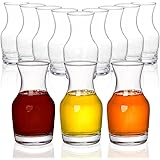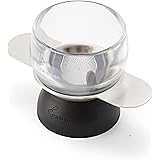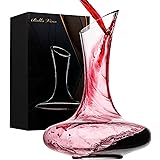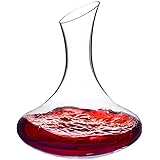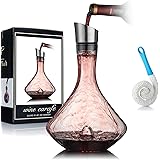Mastering Basic Wine Pairing: Your Essential Guide to Food Harmony
Navigating the world of food and wine pairing can feel daunting. With countless varietals and dishes, many home cooks and enthusiasts often wonder where to begin. However, as the helpful video above demonstrates, mastering basic wine pairing doesn’t have to be complicated. By understanding a few fundamental principles, you can transform your meals and enhance every dining experience. This guide builds upon those core concepts, offering deeper insights into how to perfectly harmonize your food and wine choices.
The secret to great food and wine pairing lies in balancing flavors. Think of it as creating a symphony where each element plays a vital part. You want the wine to complement the food, elevating both without one overpowering the other. It’s about making thoughtful selections that enhance your culinary experience.
Understanding the Building Blocks of Flavor
Before diving into specific rules, it’s crucial to grasp the fundamental elements at play. Wine possesses distinct components such as sugar, acid, fruit, tannins, and alcohol, each contributing to its unique profile. On the other side, food brings elements like fat, acid, salt, sweet, bitter, and texture to the table. The art of wine pairing truly shines when these different components are considered together.
For example, tannins, commonly found in red wines, create a drying sensation in your mouth. In contrast, acidity in wine provides a refreshing, crisp feel. Understanding these basic interactions is your first step toward successful pairings. It allows you to anticipate how a wine will react with specific food characteristics.
Rule 1: The Versatility of Dry Rosé for Appetizers
When hosting a gathering, a platter of hors d’oeuvres presents a delightful challenge. You might have a medley of flavors and textures, from savory mini quiches to fresh bruschetta, alongside perhaps some charcuterie. How do you find one wine to complement such a diverse spread without clashing?
The answer often lies with a dry rosé. This versatile wine bridges the gap between white and red, offering the crisp, refreshing qualities of a white wine alongside the berry notes often found in lighter reds. Its balanced profile allows it to stand up to a wide range of flavors without overwhelming any single one, making it an ideal choice for varied appetizers. This makes a dry rosé a go-to for any pre-dinner spread.
Rule 2: Acids Attract — Elevating Dishes with High Acidity
Some foods naturally have a vibrant, tangy acidity that makes them incredibly appetizing. Think of a dish you’d typically squeeze a fresh lemon over, such as delicate roasted fish, chicken piccata, or a classic pasta with tomato sauce. Attempting to pair these with a rich, low-acid wine can often make the wine taste flat.
Instead, the rule “acid needs acid” comes into play. A light, citrusy, and equally acidic white wine, such as a crisp Pinot Grigio or a zesty Sauvignon Blanc, will mirror and elevate these flavors. This pairing creates a delightful “zap” of freshness, almost like adding another squeeze of lemon to your dish. It enhances the dish’s brightness without making the wine seem too dull.
Rule 3: Tannins Seek Fat — The Classic Red Meat Pairing
Few pairings are as iconic and satisfying as a bold red wine with a rich, fatty cut of meat. If you’re enjoying a marbled ribeye steak, braised duck, or grilled sausages, you need a wine that can stand up to that richness. This is where wines high in tannins truly shine, as the video explains.
The tannins in a bold red wine like a Syrah or Cabernet Sauvignon interact chemically with the fat in the food. They effectively “cut through” the fattiness, cleansing your palate and making each bite of food, and each sip of wine, feel fresh and balanced. This interaction is why these full-bodied red wines are a perfect counterpoint to hearty, fatty dishes, creating a deeply satisfying textural experience.
Rule 4: Sweetness Tames the Heat — Pairing with Spicy Dishes
Serving a dish with a noticeable kick, perhaps a Thai curry or a spicy Mexican meal, can be a challenge for many wines. High alcohol wines can intensify the heat, while dry wines may simply get lost. Here, the principle of “heat needs sweet” becomes your guiding light.
A lighter, slightly sweet wine works wonders by providing a gentle contrast that cools and calms the palate. Wines like a semi-dry Riesling or a White Zinfandel offer just enough sweetness to balance the capsaicin (the compound responsible for spice) without being cloying. This pairing helps to soothe the heat, allowing the other nuanced flavors of the dish to emerge more clearly. It’s a delightful way to enjoy spicy food without overwhelming your senses.
Rule 5: Bubbles Conquer Salt and Fry — A Match Made in Heaven
Salty and fried foods can be notoriously difficult to pair with wine. Their intense flavors and rich textures can sometimes overwhelm delicate wines or clash with heavy reds. However, there’s a sparkling solution for these culinary delights: bubbly wines.
Similar to how beer cuts through the richness of fried food, the carbonation in sparkling wine acts as a fantastic palate cleanser. The effervescence provides a refreshing contrast to the saltiness and richness, adding a whole new textural dimension. Whether you’re enjoying crispy fried chicken, salty potato chips, or even caviar, a dry sparkling wine like Brut Champagne or a Cava will refresh your palate and enhance the experience. The acidity and bubbles cut through fat and salt, preparing your taste buds for the next delicious bite.
Rule 6: Earthy Echoes — Harmonizing with Rustic Flavors
Certain foods possess distinct earthy characteristics that evoke forests, mushrooms, and rich soil. Think of dishes featuring mushrooms, lentils, truffles, or gamey meats like duck or venison. These ingredients have a depth of flavor that requires a specific kind of wine to truly complement them.
This is where “earthy needs earthy” comes in. Wines with their own earthy, savory, or ‘forest floor’ notes are the ideal companions. Varietals such as a Pinot Noir, known for its mushroom and forest notes, or a Syrah with its peppery, sometimes smoky undertones, will beautifully echo and enhance these food flavors. This alignment of dominant flavors creates a sophisticated and deeply satisfying food and wine pairing. Always consider the most prominent flavor on your plate—is it sweet, salty, or citrusy?—to guide your choice for an exceptional dining experience.


